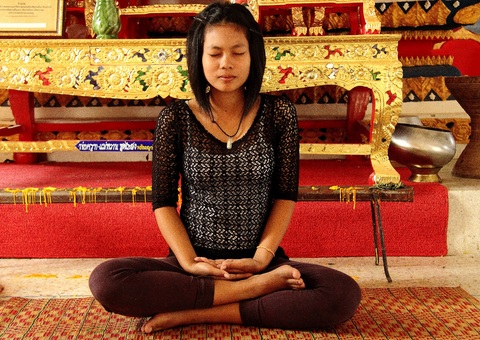Take a long deep breath. You made it! It’s Easter school holidays and that means it’s time to take a breath both figuratively and literally. You probably already know that breathing exercises are good for you but are you making time for one of the simplest and easiest ways to manage stress?
Stressful situations like cramming for exams, planning holidays and trying to juggle work and family commitments can all produce a stress response. That can take the form of shallow breathing, heart-pounding, tension headaches, tight muscles and a mind that’s racing a million miles an hour.
They are all very normal responses to stressful situations. Stress triggers the fight or flight response. It harks back to our survival instincts when we were chasing a meal, or more likely something was chasing us for their own meal!.
These physiological and psychological responses to stress are okay for short-term threats but a sustained stress response can have damaging effects on your body and health.
So what can you do? Well, here’s the good news. Research has shown that breathing exercises are one way to manage stress.
There are many techniques and you’re sure to find one that works for you but most of the techniques involved breathing deeply and slowly from your stomach rather than form your chest.
So let’s give it a try right now…
First, find a comfortable place to sit. Try not to slouch and keep both feet flat on the floor.
Placing one hand on your stomach, to begin with, is a good way to monitor if you’re breathing with your diaphragm.
- Breathe in through your nose, slowly, over a few seconds and you should feel your stomach move out against your hand.
- Breathe out slowly through your nose, or your mouth if that feels more comfortable, tensing your stomach muscles to push out all the air. You should feel your stomach move in. Note that the ‘out’ breath should be longer than the ‘in’ breath in order to stimulate the relaxation response.
- Continue for several minutes.
As you progress you can try pausing for a couple of seconds after you breathe in and then again after you breathe out.
You’ll likely that find that after more practice each breath in and out can extend to several seconds and you may feel like extending the whole session but remember that the body enjoys little moments of relaxation and calm frequently just as much as an extended period of time. So take the pressure off!
If you feel that you are not comfortable sitting up or that you can’t feel your stomach moving then lying down on the floor can also work well and it may help you to relax more. You can even stand as well.
Try to find times in your daily life where you can practice your breathing. Fitting in breathing exercises in your daily routine is not about making more time. It’s about prioritising what’s important. And what could be more important than your health?
Here are some ideas for finding time…
- While you are waiting for the kettle to boil practice breathing
- Instead of flicking through your social feeds while on your daily bus commute, put down your phone and practice breathing
- When you’re waiting impatiently at the checkout, practice breathing
- Instead of chatting before your gym class, find a quieter spot in the gym and practice breathing
If you need extra encouragement there are plenty of apps that can remind you and track your progress.
When you search deep breathing on Google there’s even a 1-minute breathing video that appears at the top of the search results.
Beyond Blue is just one of many Australian organisations that have breathing exercises that are free to download.
With so many resources there’s no excuse. So what are you waiting for? Take a deep breath and begin.


Leave A Comment